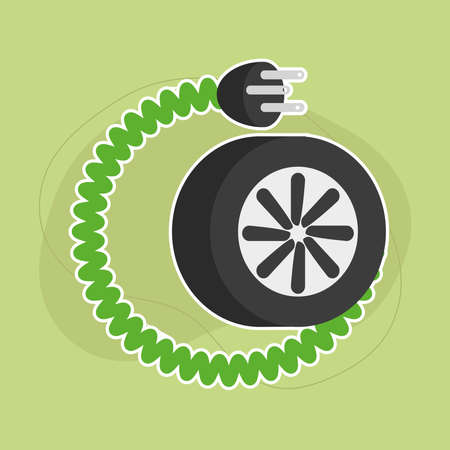Introduction to UK Tyre Laws
Welcome, fellow road explorers! Whether you’re planning a scenic drive through the Lake District or embarking on a coastal camping adventure in Cornwall, understanding UK tyre laws is absolutely essential. Not only does it ensure your own safety and the well-being of your passengers, but it also means you’re doing your bit for ethical and eco-friendly driving across Britain’s stunning landscapes. The rules governing tyres might seem like just another box to tick, but they play a crucial role in keeping everyone safe on the roads—especially when unpredictable weather or winding country lanes are involved. Proper tyre care and legal compliance help reduce accidents, improve fuel efficiency, and minimise environmental impact, making every journey both responsible and enjoyable. So before you hit the open road with your campervan or set off for your next wild camping spot, let’s dive into why getting to grips with tyre regulations should be at the top of every UK driver’s checklist.
Legal Tyre Tread Depth and Safety Standards
When it comes to driving in the UK, understanding the legal tyre tread depth is essential not only to stay on the right side of the law but also for your safety—especially as you wind through country lanes or tackle sudden downpours. The minimum legal tread depth for car tyres in the UK is 1.6mm across the central three-quarters of the tyre’s breadth and around its entire circumference. Anything less, and you could face a hefty fine and penalty points on your licence.
Why Tread Depth Matters for Safety
Tread depth plays a crucial role in how your vehicle grips the road, especially in wet weather—a common scenario given the British climate. Shallow treads mean less grip and increased stopping distances, making aquaplaning on rain-soaked roads far more likely. On winding British B-roads or when navigating rural routes during a camping trip, having good tread can be the difference between staying safe and losing control.
Legal Requirements at a Glance
| Vehicle Type | Minimum Legal Tread Depth | Recommended Check Frequency |
|---|---|---|
| Cars & Light Vans | 1.6mm (central ¾ width) | Every fortnight or before long journeys |
| Motorcycles over 50cc | 1.0mm (across ¾ width) | Monthly |
| Bicycles & Mopeds under 50cc | Tread visible all around tyre | Monthly |
How to Check Your Tyre Tread Before Setting Off
If you’re heading out on a self-drive tour or planning a weekend camping escape, always check your tyres before hitting the road. The simplest method is the “20p test”—insert a 20 pence coin into your tyre’s main grooves; if you can’t see the outer band, your tread is above the legal limit. For peace of mind, consider using a proper tread gauge for a more accurate reading.
Remember, checking your tyres isn’t just about legality—it’s about ensuring every journey, whether urban commute or scenic detour, is as safe as possible under classic British skies.
![]()
3. Tyre Maintenance and MOT Considerations
When planning a UK road trip or camping holiday, it’s crucial to ensure your vehicle is in top condition, especially when it comes to your tyres. The annual MOT (Ministry of Transport) test is a legal requirement for most vehicles over three years old, and tyre checks are a significant part of this inspection. Inspectors pay close attention to the condition, tread depth, and overall safety of each tyre. Failing to meet the minimum standards can result in an MOT failure, fines, or even points on your driving licence.
What Do MOT Inspectors Look For?
| Inspection Point | Description | Legal Requirement |
|---|---|---|
| Tread Depth | Measured across the central three-quarters of the tyre | At least 1.6mm |
| Tyre Condition | No cuts, bulges, or excessive wear | Tyres must be free from serious damage |
| Correct Fitment | No mixing of radial and cross-ply tyres on the same axle; correct size and type for the vehicle | Must match manufacturer recommendations |
| Tyre Pressure | Should not be noticeably under- or over-inflated | Recommended levels per vehicle manual |
| Spare Tyre (if present) | Checked only if fitted to the car at inspection time | No legal requirement unless being used on the vehicle |
Why Regular Tyre Maintenance Matters Before Your Camping Trip
Regular tyre maintenance isn’t just about passing your MOT; it’s also about ensuring safety and avoiding roadside dramas on your next camping adventure. By routinely checking your tyres’ pressure, tread depth, and overall condition, you’ll reduce the risk of unexpected blowouts or costly fines—especially important when travelling off-grid or through remote parts of the British countryside.
Top Tyre Maintenance Tips:
- Check tread depth: Use a 20p coin as a quick guide – if you can’t see the outer rim, your tread is legal.
- Inspect for damage: Look for visible signs like cracks or bulges after driving rough tracks or trails.
- Monitor tyre pressure: Inflate according to your vehicle handbook, accounting for extra camping gear weight.
- Rotate regularly: Helps ensure even wear – handy if you’re often loading up for long weekends away.
- Replace when in doubt: Don’t risk it; swap out worn tyres before they become a hazard on your journey.
Avoiding MOT Failure & Fines: The Bottom Line for Adventurers
If you’re gearing up for a self-drive camping holiday across the UK, making tyre checks part of your pre-trip routine will help keep both your travel plans and wallet safe from unwanted surprises. Remember: good tyre care is essential not just for passing your MOT, but for enjoying every mile of your British road adventure with peace of mind.
4. Common Driving Mistakes and How to Avoid Fines
If you’re planning a road trip through the British countryside, there’s nothing more classic than loading up your motor and heading for the open road. But even the most seasoned drivers can fall foul of UK tyre laws, often due to a few well-known blunders. Here’s how to spot – and steer clear of – those all-too-common motoring mishaps that could land you with a hefty fine.
Classic Tyre Mistakes on British Roads
| Mistake | Why Its a Problem | How to Avoid |
|---|---|---|
| Mixing Cross-Ply and Radial Tyres | This classic error affects handling and is illegal if fitted on the same axle. | Always check tyre types before replacing; stick to one type per axle as per UK law. |
| Incorrect Tyre Pressures | Leads to poor fuel efficiency, increased wear, or even dangerous blowouts. | Check pressures before every trip, especially if your vehicle is fully loaded for camping adventures. |
| Bald or Uneven Tread Wear | Tread depth below 1.6mm is illegal and unsafe—especially on wet British roads. | Inspect tyres regularly; replace at first sign of excessive wear or damage. |
| Overloading Your Vehicle | Exceeding load ratings strains tyres and attracts fines during roadside checks. | Pack smart—refer to your vehicle manual for weight limits before heading out. |
How These Mistakes Could Affect Your Adventure
Mixing cross-ply and radial tyres isn’t just an old-school error—it’s a sure way to compromise safety, especially when winding through Yorkshire’s moors or the Lake District’s steep passes. The same goes for incorrect tyre pressures: under-inflation is notorious for ruining rural rambles, causing sluggish handling and putting unnecessary strain on your motorhome or campervan. And let’s not forget tread depth—a sudden downpour on a single-track road can turn worn tyres into a real hazard.
Avoiding Penalties While Exploring the UK
- Regular Inspections: Make checking your tyres part of your pre-trip ritual. It’s as essential as packing your tea flask or topping up the windscreen wash.
- Stay Within the Law: Stick to the legal minimum tread depth (1.6mm across three-quarters of the breadth) and always match tyre types on each axle.
- Know Your Load: Before setting off with bikes, tents, and paddleboards in tow, double-check that your tyres can handle the extra weight.
- Keep Documentation Handy: If stopped by local police or DVSA officers, being able to show recent service records can save time—and stress.
Quick Reference: Tyre Fine Avoidance Checklist
- Check tyre type consistency (no mixing cross-ply/radials per axle)
- Maintain correct tyre pressures as per vehicle handbook
- Ensure tread depth exceeds 1.6mm across central three-quarters of tread
- Avoid overloading—pack light and smart!
- Plan regular stops to inspect tyres during long journeys
The beauty of British roads lies in their unpredictability—from cobbled Cotswold lanes to misty Scottish glens. With these tips in mind, you’ll keep your adventure rolling smoothly and stay firmly on the right side of UK motoring law.
5. Seasonal Driving and Special Tyre Advice
When it comes to UK driving, the weather can be as unpredictable as a coastal breeze in Cornwall. This makes choosing the right tyres for each season an important part of staying safe and legal on Britain’s roads. Unlike some European countries, the UK does not have mandatory laws requiring drivers to switch between winter and summer tyres. However, understanding how different tyres perform throughout the year can make all the difference, especially if you’re planning a self-drive tour or heading out for a camping escape in varying conditions.
Winter vs Summer Tyres: The Local Approach
Most British motorists stick with standard summer tyres year-round due to milder winters and less frequent snowfall compared to continental Europe. Yet, in regions like Scotland or rural Wales, where icy mornings and snow showers are more common, some drivers opt for winter tyres during the colder months for better grip and control. Still, this is a personal choice rather than a legal requirement.
| Tyre Type | Best For | Typical UK Usage |
|---|---|---|
| Summer Tyres | Mild temperatures, dry or wet roads | Most common; used year-round by majority of drivers |
| Winter Tyres | Cold weather (below 7°C), snow, ice | Mainly in northern/highland areas during winter months |
| All-Season Tyres | Variable conditions throughout the year | Increasingly popular for drivers who travel widely or enjoy outdoor adventures all year long |
All-Season Tyres: A Year-Round Adventure Solution?
If you love spontaneous road trips or wild camping getaways regardless of season, all-season tyres might be your best mate. They blend aspects of summer and winter tyre technology, offering reliable performance whether you’re tackling Lake District drizzle or a frosty Dartmoor morning. While they don’t match specialist tyres in extreme conditions, they’re a practical compromise for most British journeys.
Weather’s Impact on Tyre Choice
The UK’s famously changeable climate means it’s wise to check local forecasts before hitting the road—especially if you’re venturing off-grid. Heavy rainfall can quickly lead to slippery surfaces, so ensuring your tyres have adequate tread depth (minimum legal limit is 1.6mm) is essential for safe handling and braking. In colder spells, consider swapping to winter or all-season tyres if you expect prolonged snow or ice.
6. Conclusion: Stay Safe on the UK Roads
Understanding and following UK tyre laws isn’t just about avoiding fines – it’s about making every journey safer, smoother, and more enjoyable, whether you’re weaving through the Lake District in your campervan or setting up camp along Cornwall’s rugged coast. With unpredictable British weather and ever-changing road conditions, your tyres are your first line of defence. Here’s a handy summary to keep you on track:
| Tyre Law | Key Requirement | Practical Tip |
|---|---|---|
| Tread Depth | Minimum 1.6mm across central three-quarters | Use a 20p coin for a quick check |
| Tyre Pressure | Check regularly & adjust to manufacturer’s spec | Especially before long journeys or when fully loaded |
| Tyre Condition | No cuts, bulges, or exposed cords | Inspect monthly and before any big trip |
| Type & Fitting | Same type and size per axle, correct fitting direction | Look for directional arrows on sidewall when rotating tyres |
If you’re living that van life or wild camping across the UK, make tyre checks part of your pre-adventure ritual. Responsible tyre care isn’t just good practice—it gives you peace of mind as you roam from scenic lay-bys to starlit campsites. So, take a moment to check your rubber before you hit the open road. That way, every mile is as carefree as it should be—leaving you free to focus on the journey, not what’s beneath your wheels.


